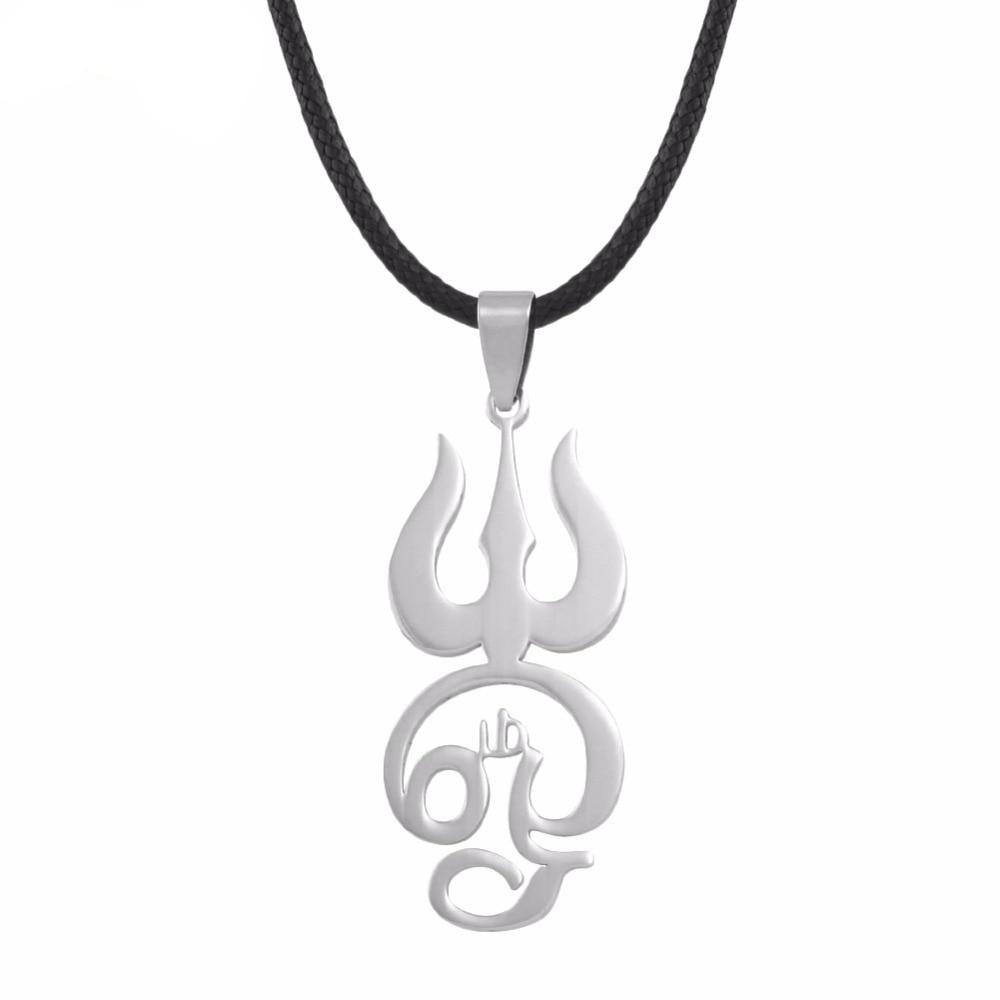The Trishula: Lucky Charm and Legendary Weapon of the God Shiva
Simply put, the trishula (also spelled trishul or trisula, from the Sanskrit word meaning "three points") is the spear used as a weapon by the Hindu god Shiva.
This symbol might be foreign to you if you are not accustomed to Indian culture, but you must understand that the trishula occupies a very important place in Hinduism.
Many statues of deities, mainly of Shiva, show us this weapon fighting evil and protecting the world of men.
As we will see in this article, this is a very powerful lucky charm capable of helping us in a whole bunch of areas of our life.
Contents :

First of all, who is Shiva?
To fully understand the meaning of trishula, we must first take an interest in its great holder: the god Shiva.
Shiva (or Siva according to traditions) is one of the most important characters in Hindu mythology and, with Brahma and Vishnu, forms a sort of Indian trinity, a trio of creator and central gods that roughly all practitioners of Hinduism worship.
We are talking here about one of the oldest religions still practiced today and undoubtedly one of the most complex (at least from the point of view of folklore). Describing one of its protagonists with precision is therefore likely to be long and complicated.
In (very) summary, however, we can say that Shiva is a destructive god whose role is to remove the old, the damaged and the used.
All this, however, does not make him a negative divinity: if Shiva destroys, it is to leave the possibility of the new and the best to be created.
In fact, Shiva's function is part of a sort of grand cosmic order and is in no way bad or evil.
Etymologically, its very name means “the one of good omen, which brings luck”. In India, it is also common to call him "the destroyer".
You will have understood: one of the main characteristics of the god Shiva is his great complexity. If you want to explore the subject further, here is an article which describes this Hindu deity.
In short, we are going to verify it through the symbol of the trishula: the powers of Shiva are truly paradoxical.
One vision, undoubtedly the shallowest, therefore consists of simply considering the trishula as a symbol of the god Shiva.
As we talked about earlier, this god's role is to destroy in order to rebuild better. The three points of the trishula would therefore be respectively associated with acts of destruction, conservation and creation.

The trishula: great weapon of the god of destruction
Historians have found numerous Hindu writings telling us about trishula.
One of the oldest, and arguably the most interesting on this subject, is the Vishnu Purana. In this text, the origin of trishula is actually explained to us in detail. It would be Surya, the sun god, who created this weapon from the energy of the star he protects.
Later, he gave it to Shiva so that he could best fight the forces of evil and ignorance.
Fighting evil and ignorance... This is precisely what this trishula pendant will be used for!
From a linguistic point of view, this symbol addresses three very distinct things. “Tri” actually means three, while “Shul” translates to suffering.
In Indian culture, the three main types of suffering often cited are:
- Aadibhautik: physical suffering
- Adhyaatmik: mental or moral suffering
- Aadidaivik: spiritual suffering
Trishula could therefore literally be “that which destroys the triple suffering”… or even “that which destroys the three reasons for suffering”.
Because, in fact, there is yet another interpretation of trishula: the tool for the destruction not of suffering but of its sources.
Hindu tradition describes it precisely as being:
- Illusions, mental and spiritual
- Desires
- Ignorance
Another way to look at it is to focus on the first of these three points, namely illusion.
Those who choose this path then consider the trishula as capable of describing the “three great illusions”, namely:
- The illusion of the physical world
- The illusion of karma and past lives
- The illusion of mind, self and ego
A more esoteric vision of trishula
This way of seeing trishula is so “special” that it deserved a paragraph just for it.
In fact, the Hindu religion has theorized a whole bunch of subtle energies that run through our body.
Whether it is the concept of aura or that of chakras, there are really many things to learn from Hinduism.
In short, the trishula would seem to be a representation of some of these energies and, in particular, of the nadis (kinds of energy currents).
The two points on the sides would represent the two poles of the human being, while the one in the middle would show us the top of the body and therefore the third eye.
Often, the trishula will also be represented with two rays of light rising and wrapping around it.
In this case, one corresponds to Ida (or feminine energy) while the other represents Pingala (or masculine energy).
The way in which the two helices go up along the trihula is also reminiscent of the way in which the kundalini energy goes up along the spine.
This is not the topic of the day but, if you want to learn more, here is the Wikipedia page which talks about what kundalini is.
Lucky charms featured in this article:

Shiva Trishula Pendant
See more

